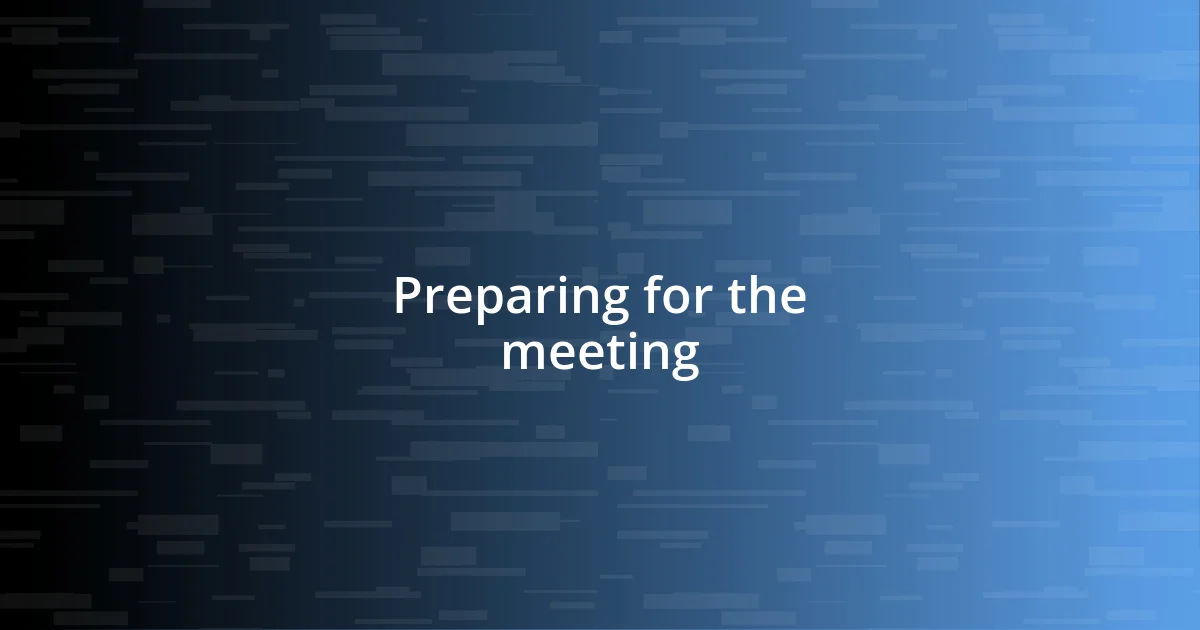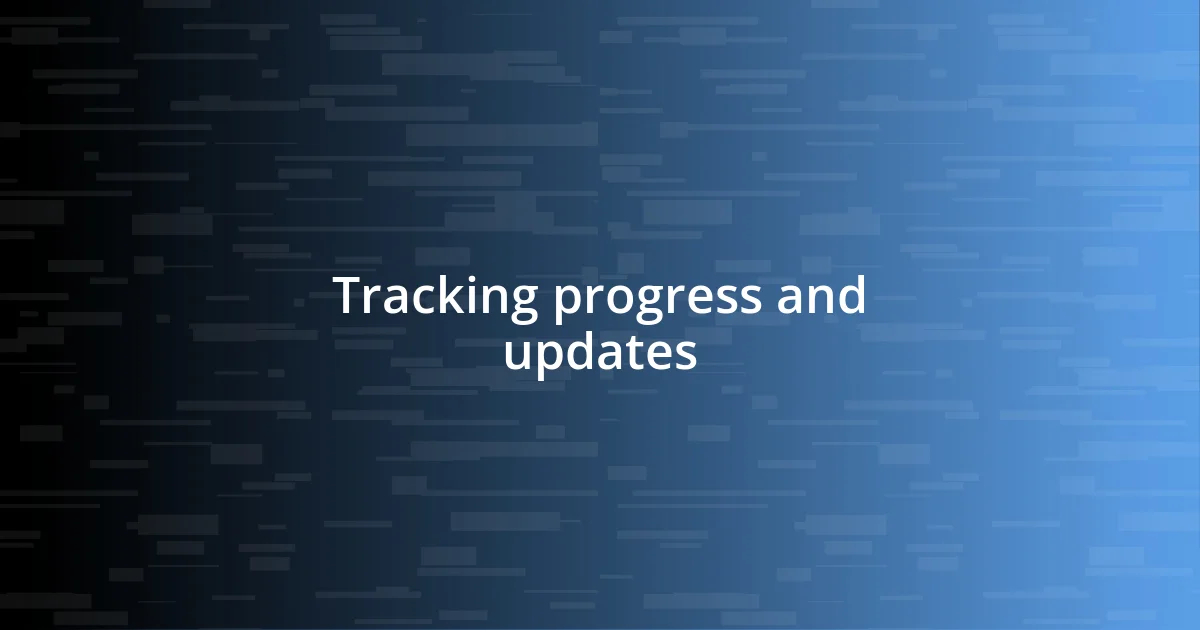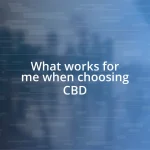Key takeaways:
- Understanding the roles and responsibilities of local lawmakers is crucial for effective advocacy and community engagement.
- Thorough preparation, including research, anticipating questions, and practicing delivery, is essential for impactful meetings with lawmakers.
- Building personal connections and engaging the community amplify voices and foster support for local issues.

Understanding local lawmakers roles
Local lawmakers play essential roles in shaping the policies that affect our everyday lives. They are often the bridge between the community’s needs and the larger government machinery. When I first got involved in local advocacy, I was surprised to learn how accessible these officials truly are; it made me realize that they genuinely care about the issues facing our neighborhoods.
Understanding their responsibilities is crucial before approaching them. These lawmakers are responsible for crafting and voting on legislation that directly impacts us— everything from funding for schools to zoning laws. It struck me one day at a city council meeting how passionate they were when discussing community projects. Can you imagine being in their position, constantly balancing competing interests while trying to serve the public good?
Moreover, local lawmakers are also tasked with representing us in state discussions. I remember feeling overwhelmed when trying to digest just how much power they hold in advocating for our concerns at higher levels. It begs the question: How can we effectively communicate our ideas and needs, knowing they are the key to making our voices heard? Understanding their roles empowers us to engage meaningfully with them, ensuring our concerns resonate in the halls of power.

Preparing for the meeting
Preparing for a meeting with local lawmakers is all about thorough preparation. I learned this the hard way after my first meeting, where I went in with a passionate idea but lacked a clear plan. Researching the lawmaker’s recent initiatives and understanding their stance on issues is key. This not only shows respect for their time but also allows you to tailor your message in a way that aligns with their priorities, making your concerns more relevant and compelling.
As I frantically scribbled notes before my second meeting, I discovered the importance of anticipating questions they might ask. It’s essential to think about their perspective and prepare answers or supporting data. After all, they want to know how your ideas will benefit their constituents. In my experience, having statistics or personal stories ready can create a powerful connection that resonates with them on a human level.
Lastly, I found it helpful to practice my pitch. By rehearsing with a friend or even in front of the mirror, I was able to refine my message and boost my confidence. The more prepared I felt, the less nervous I became, which allowed me to engage more naturally. It’s amazing how a bit of foresight can pave the way for productive conversations with those who hold our community’s future in their hands.
| Preparation Aspect | My Experience |
|---|---|
| Research on Lawmaker’s Initiatives | Understanding their priorities helps make my message relevant. |
| Anticipating Questions | Thinking from their perspective helps prepare persuasive answers. |
| Practicing Delivery | Rehearsing helped me refine my message and boost my confidence. |

Crafting a compelling message
Crafting a compelling message requires clarity and emotional resonance. I remember sitting at my kitchen table, brainstorming how to convey my concerns about local park funding. It was crucial for me to articulate not just the problem but also the personal impact it had on families in our community. Sharing a story about my children playing in the park helped to illustrate the importance of this issue, turning abstract data into a relatable narrative.
Here are some effective strategies I’ve found for crafting a persuasive message:
- Be Clear and Concise: Start with a strong opening that outlines your main point. Avoid jargon; instead, use simple language that conveys your ideas effectively.
- Tell a Story: Personal anecdotes engage lawmakers emotionally, making your message memorable. Share how the issue personally affects you or your community.
- Incorporate Data: Support your message with relevant statistics. This adds credibility and shows the scope of the problem.
- Highlight Benefits: Clearly explain how your proposal or concern will positively impact their constituents, making it easier for lawmakers to support your cause.
- Call to Action: End with a specific request or action you want them to take. This gives your message direction and purpose.
By focusing on these elements, I found that my messages became not only compelling but also powerful enough to resonate with local lawmakers.

Building a personal connection
Building a personal connection is essential when reaching out to local lawmakers. I vividly remember my first visit to a lawmaker’s office. It was nerve-wracking, but I quickly realized that sharing a piece of my personal journey—how local policies impacted my family—truly made a difference. When I mentioned how my daughter struggled to access community resources, the lawmaker’s expression softened, and I felt a genuine rapport begin to form.
As I continued meeting with other lawmakers, I recognized the importance of finding common ground. I’d often ask them about their experiences in the community, leading to conversations that felt less like a pitch and more like a shared moment. For instance, discussing local events we both attended created a bond and made my approach feel more organic. Have you ever noticed how personal connections can shift the dynamics of a conversation? It’s incredible how this simple act can lead to mutual understanding and respect.
Maintaining that connection afterward was equally important. I made it a point to follow up with a thank-you note, referencing our discussion to show that I valued their time and perspective. I felt it wasn’t just a courtesy; it was a way to keep the dialogue open. This practice, rooted in authenticity, makes it much easier for lawmakers to remember and relate to you when your issues arise again. In my experience, these small gestures helped build a bridge that could support future conversations.

Following up after the meeting
Following up after a meeting can be pivotal. I recall feeling a mix of excitement and nervousness as I left my last meeting. To keep that momentum going, I decided to send a personalized email within a day. In it, I expressed my gratitude for their time and highlighted a specific point we discussed that resonated with me. This simple act not only demonstrated my appreciation but also reinforced my commitment to the topic.
I also learned the importance of providing additional resources in my follow-up. For example, after discussing park renovations, I attached some community testimonials about how essential green spaces are for kids’ development. I wanted to remind them that we weren’t just talking about facilities; we were discussing our children’s happiness and well-being. Has anyone ever shared a piece of evidence that made you reconsider a stance? It’s fascinating how data can weave into our narratives and solidify our messages.
Finally, I made a point to ask for feedback on any future steps they might be considering. Not only did this invite an ongoing dialogue, but it also showed I valued their perspective. I genuinely wanted to know their thoughts and how I could assist them further. By maintaining that open line of communication, I felt I was placing myself as an ally rather than just a concerned citizen. This, I believe, is how we turn a single meeting into a lasting relationship.

Tracking progress and updates
Tracking progress after engaging with local lawmakers is essential to keep the momentum alive. I remember feeling both hopeful and uncertain following my initial outreach. To stay informed, I set up Google Alerts for updates on legislation that resonated with my discussions. Every time I received an update, it reignited that spark of motivation. Have you ever felt that thrill when you see your passion reflected in local news? It’s invigorating!
In addition to tracking specific legislation, I devoted time to reading through the communications from my lawmakers’ offices. This allowed me to grasp their ongoing initiatives and priorities better. Once, I stumbled upon a newsletter highlighting a community forum about education resources. I immediately reached out, expressing my interest and offering to share personal stories at the event. This not only showed my continued commitment but also positioned me as an involved community member. Isn’t it fascinating how being proactive can unveil unexpected opportunities?
I also keep a dedicated notebook where I jot down notes from meetings, updates, and key takeaways. This helps me maintain a clear view of how our conversations evolve over time. Reflecting on those notes often brings fresh ideas for future discussions. Have you ever looked back and realized how much your understanding has grown? It’s a powerful reminder of how far we’ve come and why sustained engagement matters in public policy—and it’s so fulfilling to see those connections take shape over time.

Engaging the community for support
Engaging the community for support means creating a network where voices are amplified. In my experience, hosting a small gathering in my neighborhood was pivotal. I invited residents for a casual meeting over coffee to discuss local issues; the excitement in the room was palpable. Have you ever noticed how sharing a common concern can instantly bond a group? It was amazing to hear everyone’s stories and realize how collectively passionate we were about the same topics.
I also found that social media can be a powerful ally in rallying support. After sharing our group’s concerns online, I was surprised at the number of likes and comments from people I didn’t even know. It felt invigorating to connect with folks who were equally invested. Engaging with them in meaningful conversations and encouraging them to attend local meetings made a real difference. Have you thought about how digital platforms can help bring like-minded individuals together? I found that they not only facilitated discussion but were also crucial in expanding my reach.
Furthermore, gathering signatures for a petition gave our cause a tangible sense of purpose. It wasn’t just about collecting names; it was about listening to the stories behind each signature. I remember one woman who shared her personal struggle related to our cause, and it left a lasting impact on everyone involved. Those moments of connection reminded us that our efforts were for more than just policy change; they were for real people with real lives. How often do we take the time to learn others’ stories? Engaging the community isn’t just about numbers; it’s about creating relationships that foster support and commitment.














